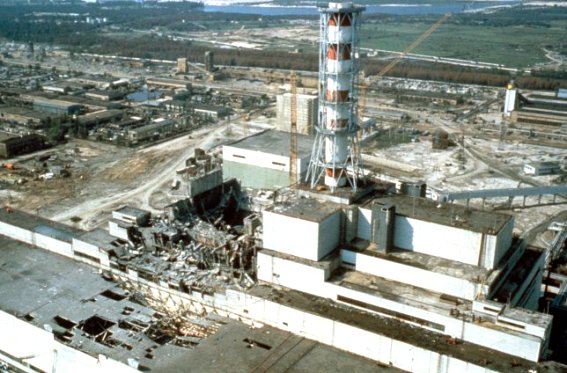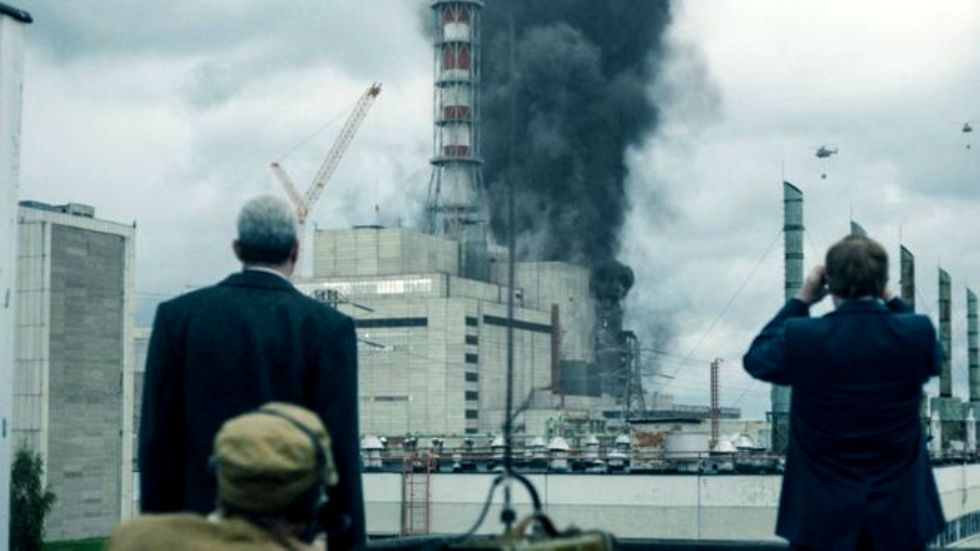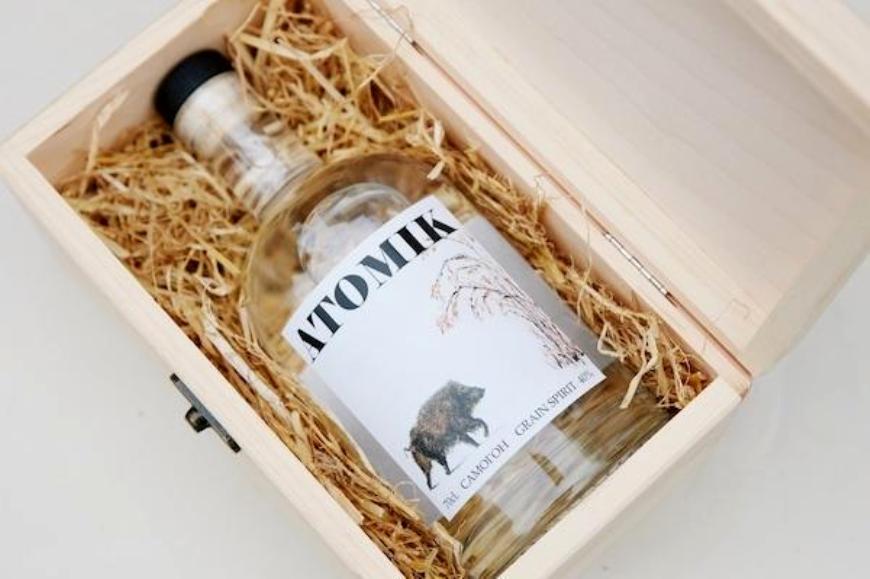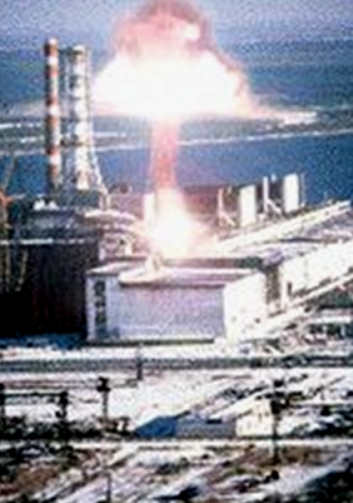

On this month's Oddities in the News Page:
Scientists create drinkable vodka from Chernobyl water and grain
IN THE ODDITIES ARCHIVES
Shark Tooth DNA
Military Admits to UFOs
Wild Animal Pets
Flinstone House
Fluffy the Cat
Artificial Intelligence Newscaster
Harvard University UFO

ATOMIK VODKA

A team of scientists announced they have created a safe-to-drink vodka from water and grains taken from inside the Chernobyl exclusion zone in Ukraine. Photo courtesy of the University of Portsmouth
Aug. 9, 2019 (UPI) -- A group of scientists announced they have created vodka from ingredients found inside the Chernobyl exclusion zone and verified that it is safe to drink.
Atomik vodka was created by University of Portsmouth scientists from grain and water from inside the exclusion zone as part of a three-year research project into the radioactivity of crops grown inside the 19-mile radius around the Chernobyl nuclear plant, which experienced a reactor explosion in 1986.
"Thirty years on after the accident we found was that in the area the crops were slightly above the very cautious Ukranian limit for consumption. So technically, you can't eat those crops. But we thought, 'Well, we've got some grain, why don't we try making a vodka,'" project leader Jim Smith told CNN.
Smith's team found distilling the vodka reduced the radioactive contamination to an undetectable level, making it safe to drink.
"When you distill something, lots of impurities stay in the waste product, and the final product is more pure. And that's what we found with our vodka -- we fermented the grain then distilled it. We found that we couldn't measure any radioactivity in the product, except natural carbon 14 that you find in any spirit drinks, or any food," Smith said.
He said the newly founded Chernobyl Spirit Company will soon be selling Atomik vodka, with 75 percent of profits going to communities affected by the disaster. The vodka will be the first consumer product from the exclusion zone since the disaster.
See the article HERE
See the video about Atomik Vodka HERE
WHAT ORIGINALLY HAPPENED?

Chernobyl was a nuclear power plant in Ukraine that was the site of a disastrous nuclear accident on April 26, 1986. A routine test at the power plant went horribly wrong, and two massive explosions blew the 1,000-ton roof off one of the plant’s reactors, releasing 400 times more radiation than the atomic bomb dropped on Hiroshima. The worst nuclear disaster in history killed two workers in the explosions and, within months, at least 28 more would be dead by acute radiation exposure. Eventually, thousands of people would show signs of health effects—including cancer—from the fallout.
The Soviets ended up evacuating 300,000 people from nearly 2,000 square miles around the plant. The bulk of that area is now called the Chernobyl Exclusion Zone
WHAT WENT WRONG?
A routine exercise to test whether an emergency water cooling system would work during a power loss started at 1:23 a.m. on April 26.
Within seconds, an uncontrolled reaction caused pressure to build up in Reactor No. 4 in the form of steam. The steam blasted the roof off the reactor, releasing plumes of radiation and chunks of burning, radioactive debris.
About two to three seconds later, a second explosion hurled out additional fuel. A fire started at the roof of Reactor No. 3, risking a breach at that facility. Automatic safety systems that would normally have kicked into action did not because they had been shut down prior to the test.
Firefighters arrived at the scene within minutes and began to fight the blaze without gear to protect them from radiation. Many of them would soon number among the 28 killed by acute radiation exposure.
Eyewitness accounts of the firefighters who had helped battle the fires described the radiation as “tasting like metal,” and feeling pain like pins and needles on their faces, according to the CBC documentary series, Witness. Days later, many of those firefighters would be dead.
See more HERE
WHAT IS THE AREA LIKE NOW?
What about the Exclusion Zone? A mostly conifer forest west of the plant, where radiation levels were the highest, turned red and then died; it’s still called the Red Forest.
“If you go to the most contaminated areas, like some sites in the Red Forest, on a spring day, you can barely hear a single bird singing,” says Anders Møller, an ecologist at the University of Paris-Sud who has been studying Chernobyl since 1991. “I’ll bet you that if we went together to the Exclusion Zone, I would be able to tell you the radiation level from the vocal activity of the birds.”
BUT...nature finds a way. Wildlife is coming back.
It may seem strange that Chernobyl, an area known for the deadliest nuclear accident in history, could become a refuge for all kinds of animals—from moose, deer, beaver, and owls to more exotic species like brown bear, lynx, and wolves—but that is exactly what has happened. Without people hunting them or ruining their habitat, the thinking goes, wildlife is thriving despite high radiation levels.
Biologist Jim Beasley of the University of Georgia’s Savannah River Ecology Laboratory, says: "“It’s just incredible. You can’t go anywhere without seeing wolves.”
In a new study released, Beasley says that the population of large mammals on the Belarus side has increased since the disaster. He was shocked by the number of animals he saw there in a five-week survey. Camera traps captured images of a bison, 21 boars, nine badgers, 26 gray wolves, 60 raccoon dogs (an Asian species also called a tanuki), and 10 red foxes.
See more HERE
